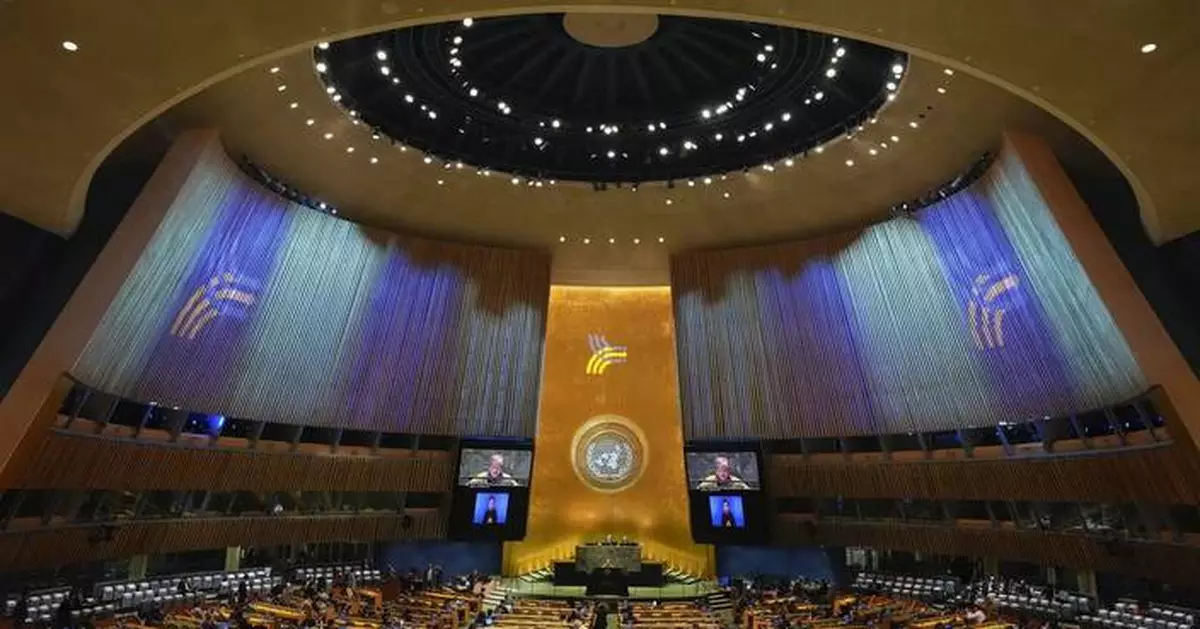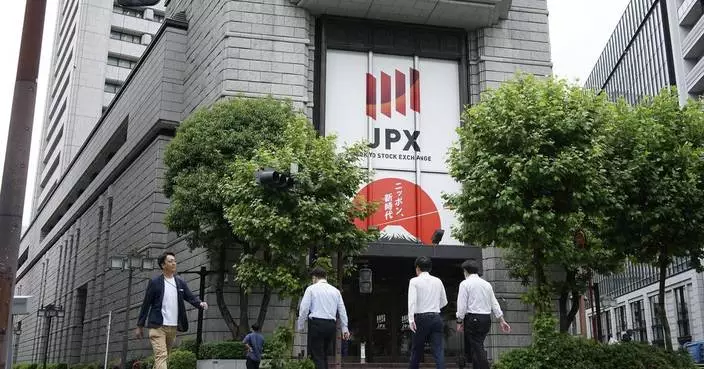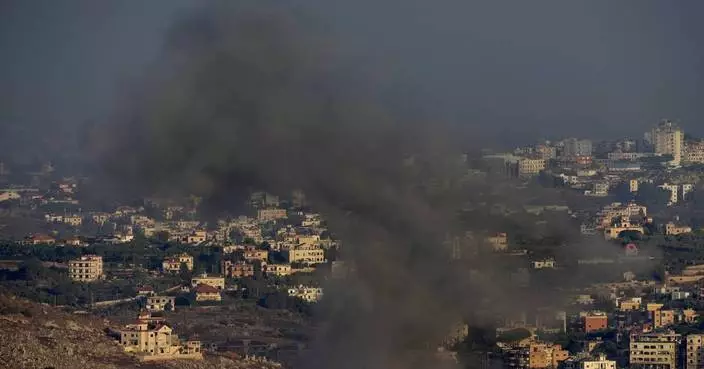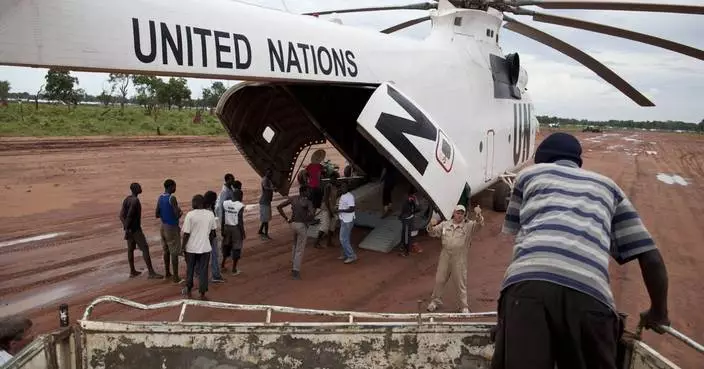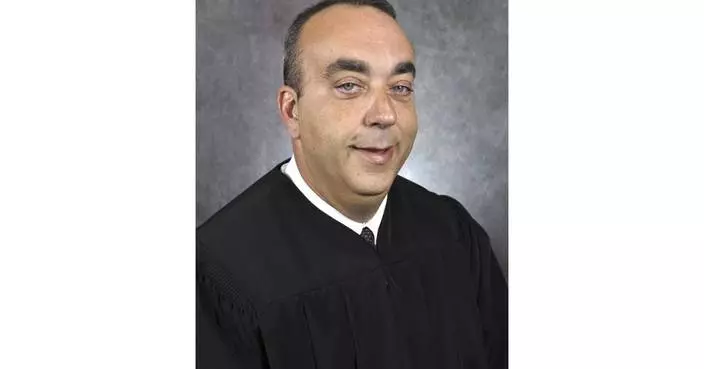UNITED NATIONS (AP) — The U.N. General Assembly adopted a “Pact for the Future” to meet the challenges of the 21st century. Now comes the hard part: uniting the world’s divided nations to move quickly to implement the agreement's 56 actions.
As Czech President Petr Pavel put it Monday at the summit meeting surrounding the pact: “Our work begins at home.”
Click to Gallery
UNITED NATIONS (AP) — The U.N. General Assembly adopted a “Pact for the Future” to meet the challenges of the 21st century. Now comes the hard part: uniting the world’s divided nations to move quickly to implement the agreement's 56 actions.
Laos Foreign Minister Saleumxay Kommasith speaks to the United Nations General Assembly during Summit of the Future, Sunday, Sept. 22, 2024 at U.N. headquarters. (AP Photo/Frank Franklin II)
Congo's Deputy Prime Minister Guylain Nyembo Mbwizya speaks to the United Nations General Assembly during Summit of the Future, Sunday, Sept. 22, 2024 at U.N. headquarters. (AP Photo/Frank Franklin II)
Mexico's Foreign Secretary Alicia Bárcena speaks to the United Nations General Assembly during Summit of the Future, Sunday, Sept. 22, 2024 at U.N. headquarters. (AP Photo/Frank Franklin II)
Mexico's Foreign Secretary Alicia Bárcena speaks to the United Nations General Assembly during Summit of the Future, Sunday, Sept. 22, 2024 at U.N. headquarters. (AP Photo/Frank Franklin II)
The 193-member world body approved the pact Sunday. The document is meant to link nations in tackling challenges ranging from climate change and artificial intelligence to escalating conflicts and increasing inequality and poverty — and improve the lives of the world’s more than 8 billion people.
The 42-page pact was adopted at Sunday’s opening of a two-day “Summit of the Future,” which continued Monday as leaders of many countries gave their views on the challenges facing the world.
And with those remarks, the leaders previewed some themes to expect at the assembly's big annual meeting, which gets into full gear Tuesday.
Indian Prime Minister Narendra Modi called for technology regulation that's global but “ensures that national sovereignty and integrity are upheld.” Chinese Foreign Minister Wang Yi reiterated his country's frequent complaints about nations dividing into geopolitical blocs, and about countries singlehandedly imposing sanctions.
Leaders from countries ranging from Angola to Ecuador to Slovakia mentioned a roster of other challenges: inequality, youth unemployment, the spread of disinformation, and more.
Right up to Sunday's vote, it was unclear whether the pact would be adopted. In fact, there was so much suspense that U.N. Secretary-General António Guterres had three prepared speeches, one for approval, one for rejection, and one if things weren’t clear, U.N. spokesman Stephane Dujarric said.
Russia’s Deputy Foreign Minster Sergey Vershinin proposed an amendment that would have significantly watered down the agreement. “No one is happy with this pact,” he said.
It turned out he was wrong. Some 143 countries, including Africa's 54 nations, voted not to take action on Russia's amendment. Only six countries supported Russia -- Iran, Belarus, North Korea, Nicaragua, Sudan and Syria. Fifteen countries abstained.
Assembly President Philémon Yang then put the pact to a vote and banged his gavel, signifying the consensus of all U.N. member nations that was required for approval — to vigorous applause.
Russia has made significant inroads in Africa, in countries such as Mali, Burkina Faso, Niger and Central African Republic. The rejection of Russia’s amendments by African countries and Mexico, a major Latin American power, was seen as a blow to Moscow by some diplomats and observers.
Vershinin complained at the summit Monday that the pact contains some “unacceptable elements." His country wants “to disassociate ourselves from the consensus” on it, he said.
He spoke about an hour before Ukrainian President Volodymyr Zelenskyy, who referred to Russia and supporters of its proposed amendment as “accomplices” in opposing efforts to make the U.N. more effective.
Guterres, clearly relieved by the pact's approval, then issued a challenge to the leaders: Implement the pact. Prioritize dialogue and negotiations. End “wars tearing our world apart” from the Middle East to Ukraine and Sudan. Reform the powerful U.N. Security Council. Accelerate changes to the international financial system. Ramp up a transition from fossil fuels. Listen to young people and include them in decision-making.
For all the endorsements of the agreement, some speakers noted shortcomings.
The Marshall Islands’ president, Hilda Heine, said it’s “hard not to be frustrated over apparent political limitations” in the pact.
“There is an incredible and persistent gap between ambitious solutions and international finance at hand," she said.
Speaking for the U.N.’s main bloc of developing countries — the Group of 77, which now has 134 members, including China — Ugandan Prime Minister Robinah Nabbanja regretted that the pact doesn’t recognize actions that developed countries should take to close the widening gaps between them and developing countries.
In a rare move at a high-level U.N. meeting where leaders often exceed the announced time limit, speeches were muted after five minutes.
The Pact for the Future says world leaders are gathering “at a time of profound global transformation,” and it warns of “rising catastrophic and existential risks” that could tip people everywhere “into a future of persistent crisis and breakdown.”
Guterres singled out a number of key provisions in the pact and its accompanying annexes, a Global Digital Compact and Declaration on Future Generations.
The pact commits world leaders to reform the 15-member Security Council, to make it more reflective of today’s world and “redress the historical injustice against Africa,” which has no permanent seat, and to address the under-representation of the Asia-Pacific region and Latin America.
It also “represents the first agreed multilateral support for nuclear disarmament in more than a decade,” Guterres said, and it commits “to steps to prevent an arms race in outer space and to govern the use of lethal autonomous weapons.”
The Global Digital Compact “includes the first truly universal agreement on the international governance of artificial intelligence,” the U.N. chief said.
As for human rights, Guterres said, “in the face of a surge in misogyny and a rollback of women’s reproductive rights,” the document commits governments to removing legal, social and economic barriers facing women and girls.
Edith M. Lederer, chief U.N. correspondent for The Associated Press, has covered foreign affairs for more than a half-century. See more of AP's coverage of the U.N. General Assembly at https://apnews.com/hub/united-nations
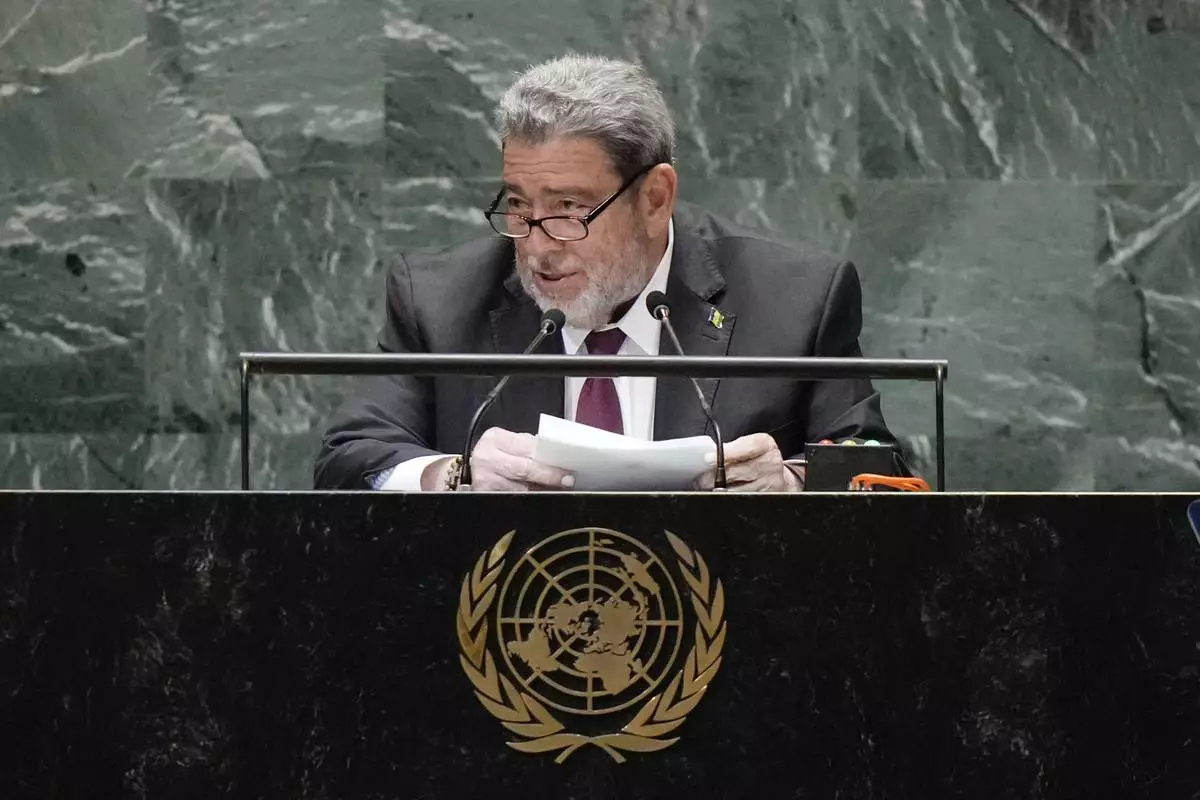
St. Vincent and the Grenadines Prime Minister Ralph E. Gonsalves speaks to the United Nations General Assembly during Summit of the Future, Sunday, Sept. 22, 2024 at U.N. headquarters. (AP Photo/Frank Franklin II)
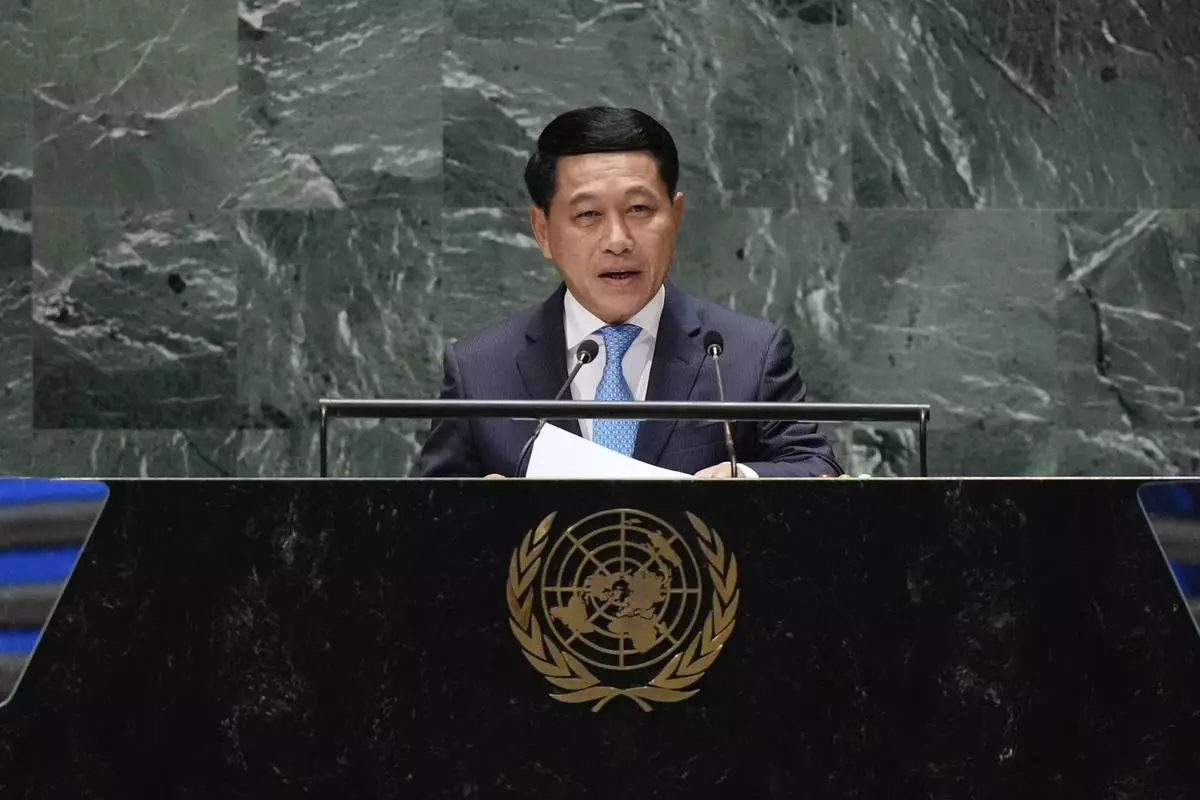
Laos Foreign Minister Saleumxay Kommasith speaks to the United Nations General Assembly during Summit of the Future, Sunday, Sept. 22, 2024 at U.N. headquarters. (AP Photo/Frank Franklin II)
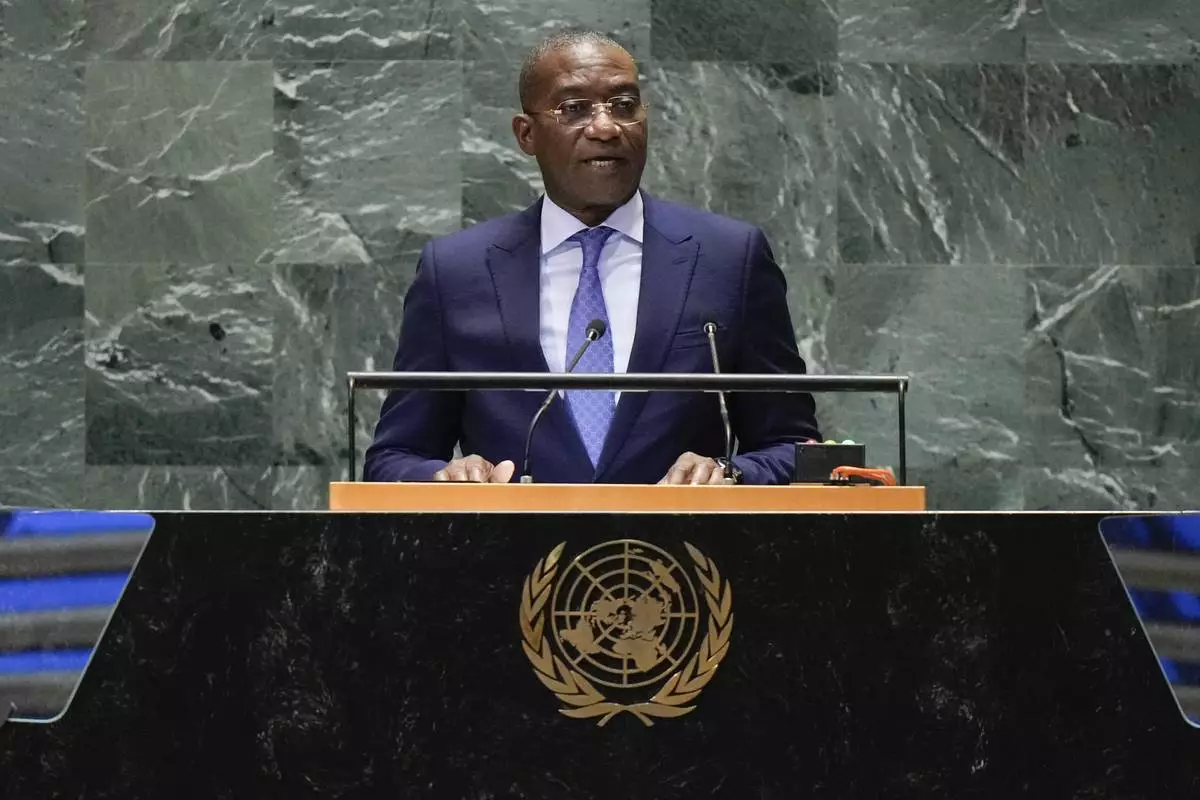
Congo's Deputy Prime Minister Guylain Nyembo Mbwizya speaks to the United Nations General Assembly during Summit of the Future, Sunday, Sept. 22, 2024 at U.N. headquarters. (AP Photo/Frank Franklin II)
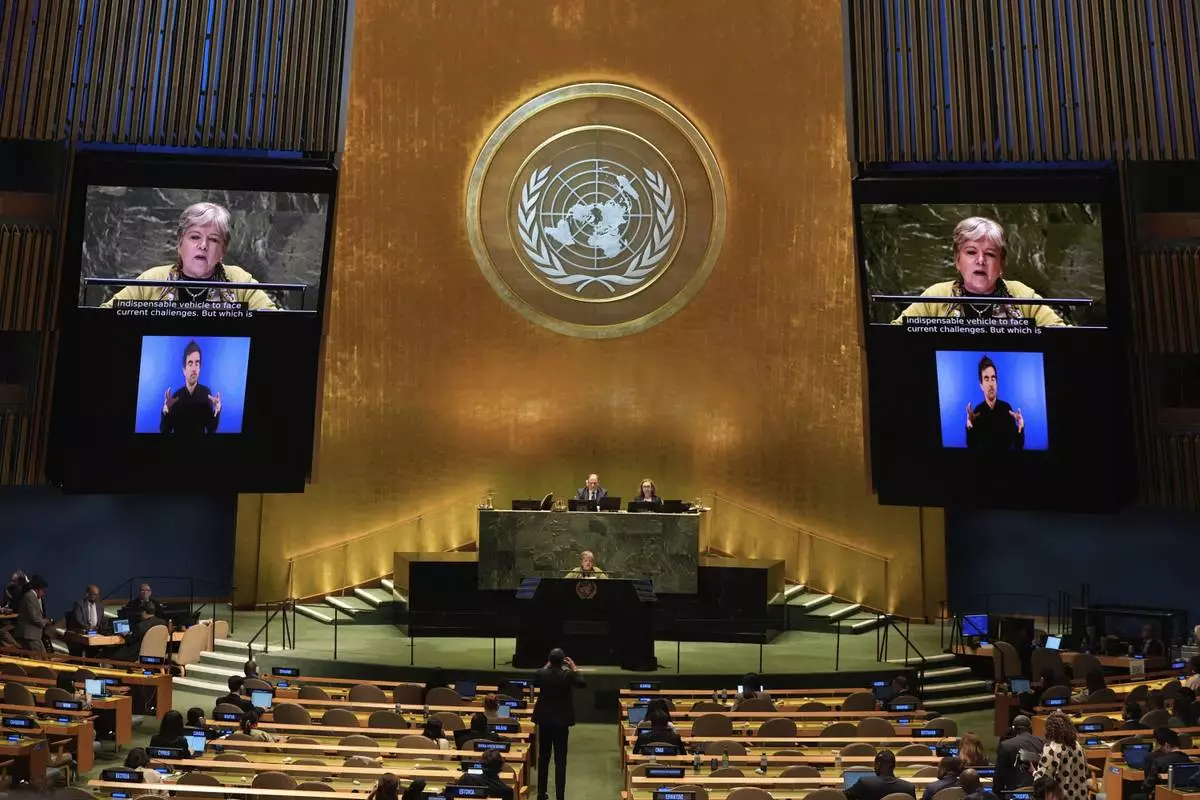
Mexico's Foreign Secretary Alicia Bárcena speaks to the United Nations General Assembly during Summit of the Future, Sunday, Sept. 22, 2024 at U.N. headquarters. (AP Photo/Frank Franklin II)
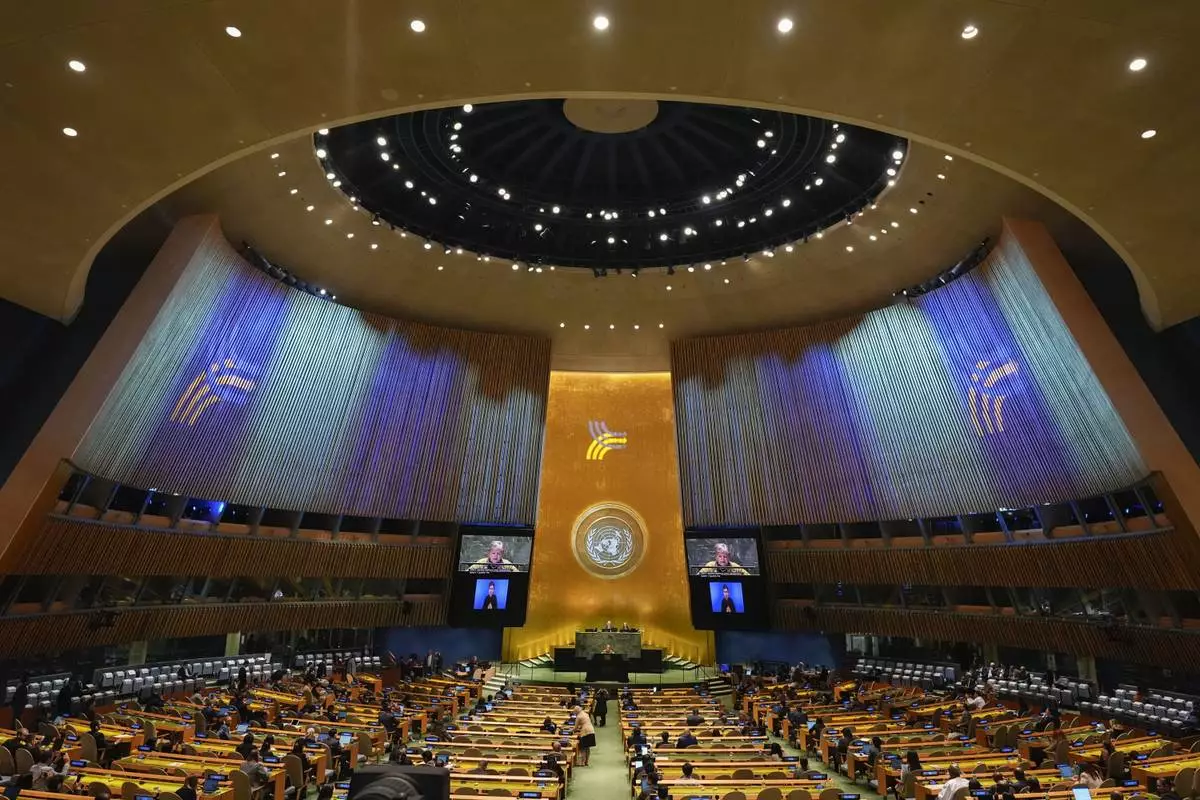
Mexico's Foreign Secretary Alicia Bárcena speaks to the United Nations General Assembly during Summit of the Future, Sunday, Sept. 22, 2024 at U.N. headquarters. (AP Photo/Frank Franklin II)
MARJAYOUN, Lebanon (AP) — Israeli strikes Monday on Lebanon killed more than 490 people, including more than 90 women and children, Lebanese authorities said, in the deadliest barrage since the 2006 Israel-Hezbollah war. The Israeli military warned residents in southern and eastern Lebanon to evacuate ahead of its widening air campaign against Hezbollah.
Thousands of Lebanese fled the south, and the main highway out of the southern port city of Sidon was jammed with cars heading toward Beirut in the biggest exodus since 2006.
Lebanon's health ministry said the strikes killed 492 people, including 35 children and 58 women, and wounded 1,645 people — a staggering one-day toll for a country still reeling from a deadly attack on communication devices last week.
In a recorded message, Israeli Prime Minister Benjamin Netanyahu urged Lebanese civilians to heed Israeli calls to evacuate, saying “take this warning seriously.”
“Please get out of harm’s way now,” Netanyahu said. “Once our operation is finished, you can come back safely to your homes.”
Israel's military spokesman, Rear Adm. Daniel Hagari, said the army will do “whatever is necessary” to push Hezbollah from Lebanon’s border with Israel.
Hagari claimed Monday’s widespread airstrikes had inflicted heavy damage on Hezbollah. But he would not give a timeline for the ongoing operation and said Israel was prepared to launch a ground invasion of Lebanon if needed.
“We are not looking for wars. We are looking to take down the threats,” he said. “We will do whatever is necessary to do to achieve this mission."
Hagari said Hezbollah has launched some 9,000 rockets and drones into Israel since last October, including 250 on Monday alone.
The military spokesman said Israeli warplanes struck 1,300 Hezbollah targets Monday, destroying cruise missiles, long- and short-range rockets and attack drones. He said many were hidden in residential areas, showing photos of what he said were weapons hidden in private homes.
“Hezbollah has turned southern Lebanon into a war zone,” he told a news conference.
Israel estimates Hezbollah has some 150,000 rockets and missiles, including guided missiles and long-range projectiles capable of striking anywhere in Israel.
Earlier Monday evening, the Israeli military said it had carried out a targeted strike in Beirut. It did not give details. Lebanon’s state-run National News Agency reported three missiles hit southern Beirut's Beir al-Abed neighborhood. Hezbollah's Al-Manar TV said six people were wounded.
Lebanese Health Minister Firass Abiad said the earlier strikes hit hospitals, medical centers and ambulances. The government ordered schools and universities to close across most of the country and began preparing shelters for the displaced.
Some strikes hit residential areas in the south and the eastern Bekaa Valley. One hit a wooded area as far away as Byblos, more than 80 miles (130 kilometers) from the border north of Beirut.
Israel said it was expanding the airstrikes to include areas of the valley along Lebanon’s eastern border with Syria. Hezbollah has long had an established presence in the valley, where the group was founded in 1982 with the help of Iran’s Revolutionary Guards.
Israel’s military chief, Lt. Gen. Herzi Halevi, said Israel was preparing its “next phases” of operations against Hezbollah, and that its airstrikes were “proactive,” targeting Hezbollah infrastructure built over the past 20 years.
Halevi said the goal was to allow displaced Israelis to return to their homes in northern Israel.
Meanwhile, Hezbollah said it fired dozens of rockets toward Israel, including at military bases. It also targeted for a second day the facilities of the Rafael defense firm, headquartered in Haifa.
The evacuation warnings were the first of their kind in nearly a year of steadily escalating conflict and came after a particularly heavy exchange of fire Sunday. Hezbollah launched around 150 rockets, missiles and drones into northern Israel in retaliation for strikes that killed a top commander and dozens of fighters.
The increasing strikes and counterstrikes have raised fears of all-out war, even as Israel battles Hamas in Gaza and tries to negotiate the release of scores of hostages taken in Hamas' Oct. 7 attack. Hezbollah has vowed to continue its strikes in solidarity with Hamas, a fellow Iran-backed militant group.
A spokeswoman for President Joe Biden said the administration was concerned about what’s happening between Israel and Hezbollah in Lebanon and insisted that getting a cease-fire deal between Israel and Gaza was key to easing tensions in the region.
“It’s in everyone’s interest to resolve it quickly and diplomatically,” White House Press Secretary Karine Jean-Pierre told reporters traveling with Biden to New York, where he is to deliver his final address to the U.N. General Assembly on Tuesday.
Monday's death toll far surpassed that of Beirut’s devastating port explosion in 2020, when hundreds of tons of ammonium nitrate stored in a warehouse detonated, killing at least 218 people and wounding more than 6,000.
The Lebanese Health Ministry asked hospitals in southern Lebanon and the eastern Bekaa Valley to postpone non-urgent surgeries to treat people wounded by “Israel’s expanding aggression on Lebanon.”
On Monday, residents received text messages reading: “If you are in a building housing weapons for Hezbollah, move away from the village until further notice,” Lebanese media reported.
Lebanon's information minister, Ziad Makary, said his office in Beirut had received a recorded message telling people to leave the building.
“This comes in the framework of the psychological war implemented by the enemy,” Makary said, and urged people “not to give the matter more attention than it deserves.”
Communities on both sides of the border have largely emptied because of the near-daily exchanges of fire.
Israel has accused Hezbollah of transforming entire communities in the south into militant bases, with hidden rocket launchers and other infrastructure. That could lead the Israeli military to wage an especially heavy bombing campaign, even if no ground forces move in.
An Israeli airstrike on a Beirut suburb on Friday killed a top Hezbollah military commander and more than a dozen fighters, as well as dozens of civilians, including women and children.
Last week, thousands of communications devices, used mainly by Hezbollah members, exploded in different parts of Lebanon, killing 39 people and wounding nearly 3,000, many of them civilians. Lebanon blamed Israel, but Israel did not confirm or deny responsibility.
Hezbollah began firing into Israel a day after the Oct. 7 attack in what it said was an attempt to pin down Israeli forces to help Palestinian fighters in Gaza. Israel has retaliated with airstrikes, and the conflict has steadily intensified.
Hezbollah has said it will keep up attacks until there is a cease-fire in Gaza, but that appears increasingly elusive as the war nears its anniversary.
Hamas-led militants stormed into southern Israel on Oct. 7, killing some 1,200 people, mostly civilians, and abducting around 250. Some 100 captives are still held in Gaza, a third of whom are believed to be dead, after most of the rest were released during a weeklong cease-fire in November.
Israel's offensive has killed over 41,000 Palestinians, according to the Gaza Health Ministry, which does not differentiate between civilians and fighters. It says women and children make up a little over half of those killed. Israel says it has killed over 17,000 militants, without providing evidence.
Lidman reported from Jerusalem, and Mroue reported from Beirut. Associated Press writers Abby Sewell in Beirut and Aamer Madhani in New York contributed to this report.
Follow AP’s war coverage at https://apnews.com/hub/israel-hamas-war
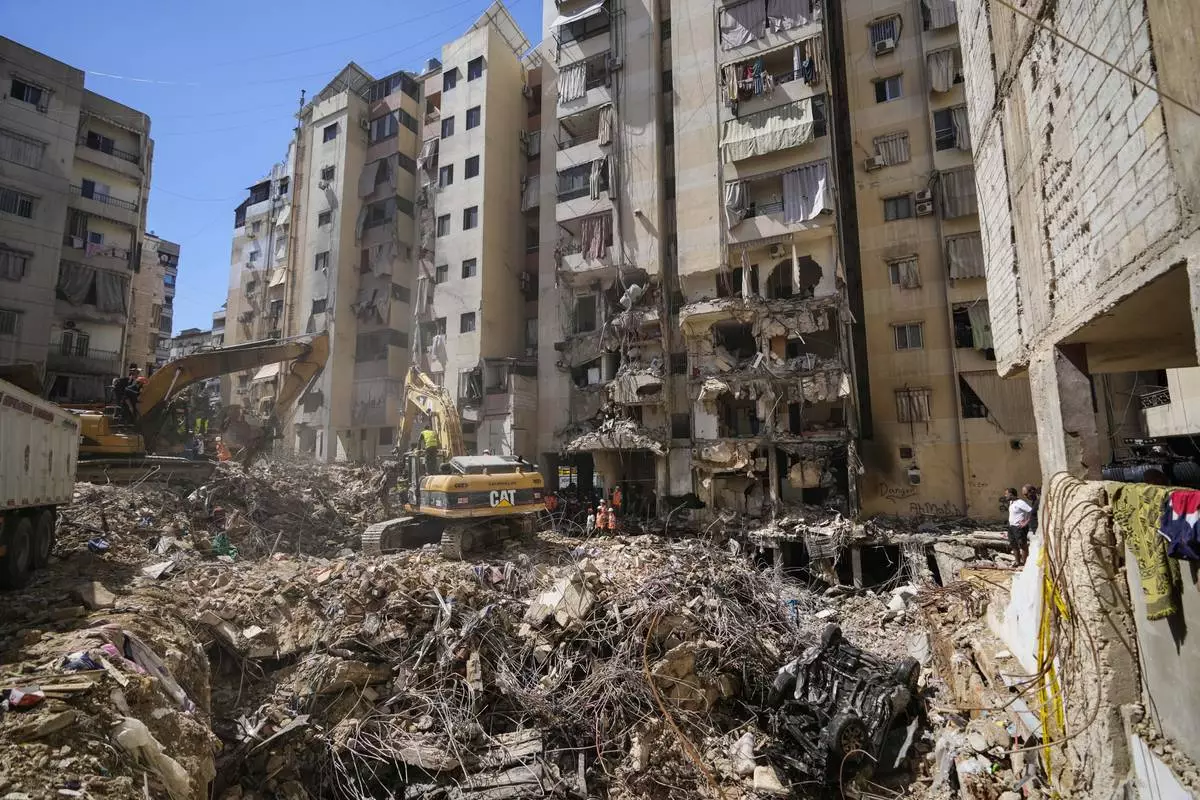
Emergency workers use excavators to clear the rubble at the site of Friday's Israeli strike in Beirut's southern suburbs, Lebanon, Monday, Sept. 23, 2024. (AP Photo/Hassan Ammar)
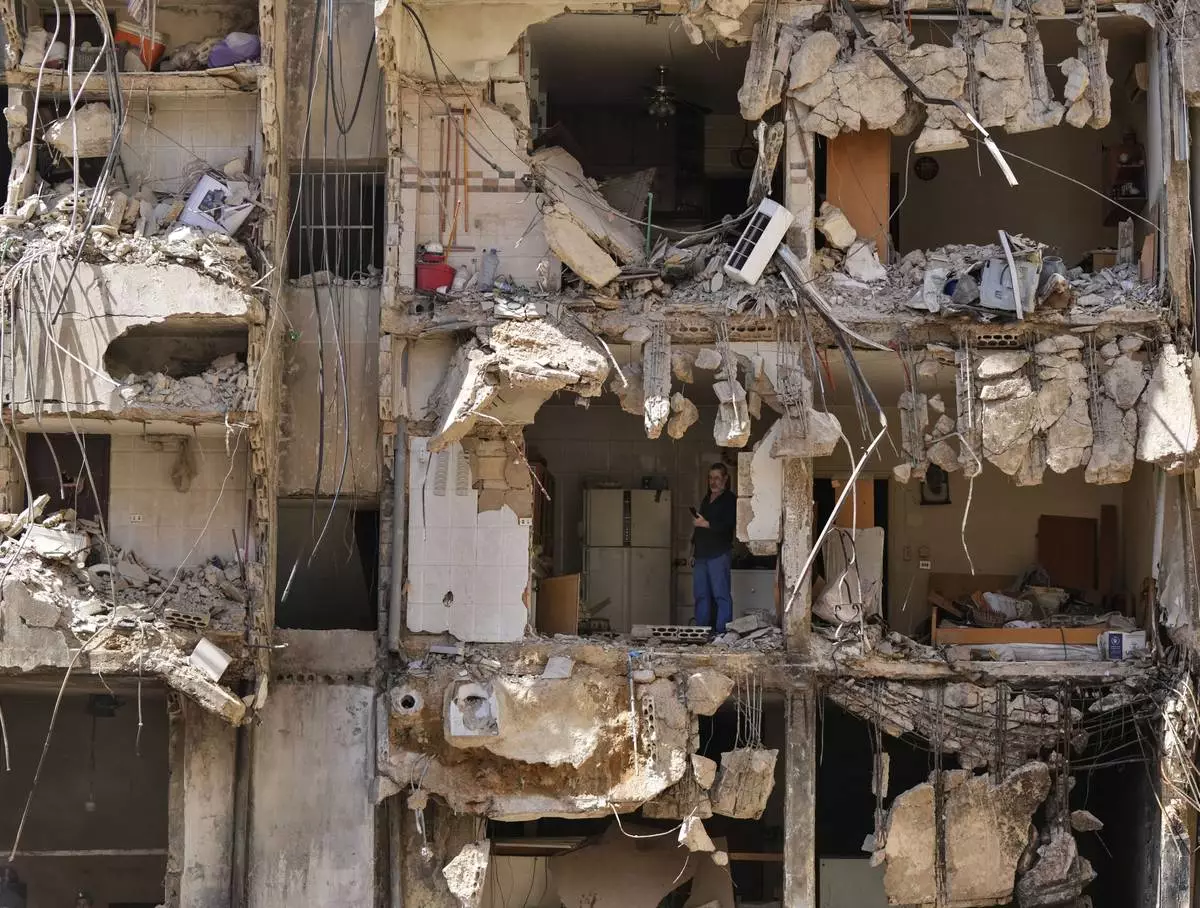
A man watches rescuers sift through the rubble as they search for people still missing at the site of Friday's Israeli strike in Beirut's southern suburbs, Monday, Sept. 23, 2024. (AP Photo/Hassan Ammar)

An armed Israeli fighter jet is seen from Hadera as it crosses towards northern Israel, on Monday, Sept. 23, 2024. (AP Photo/Ariel Schalit)
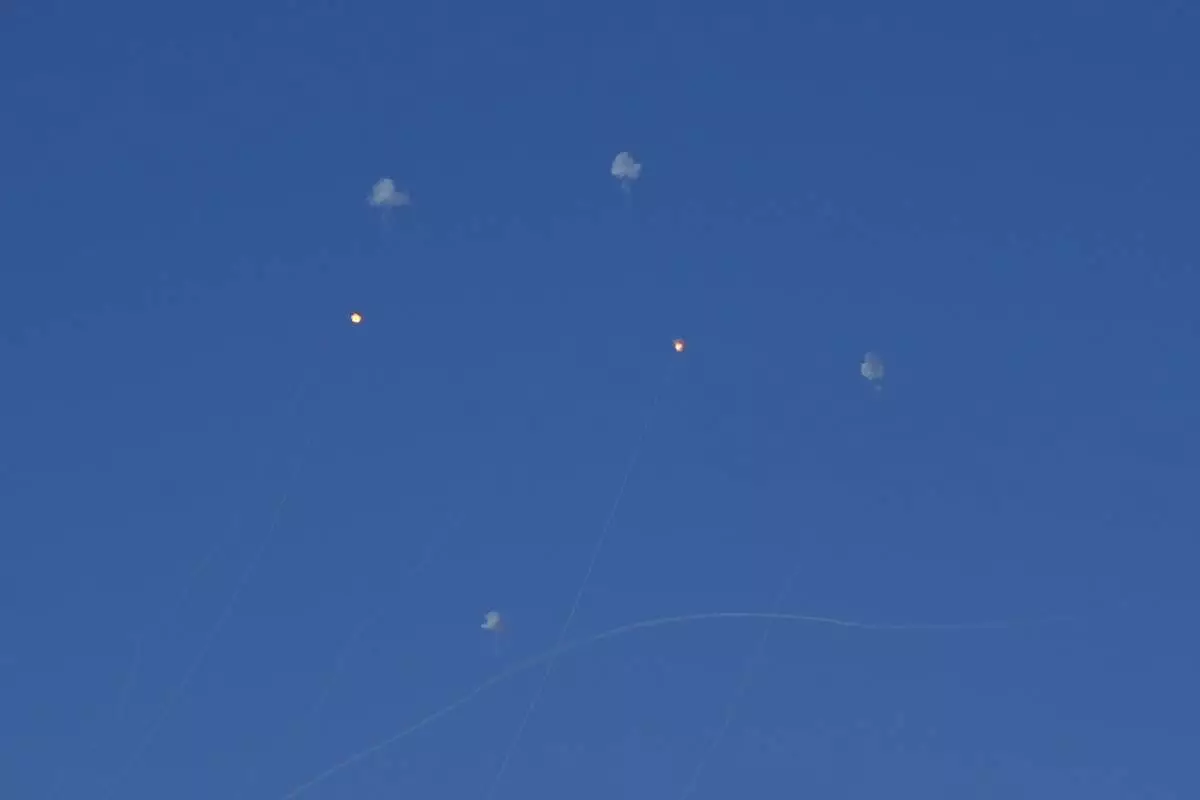
Israeli Iron Dome air defense system fires to intercept rockets that were launched from Lebanon, in northern Israel, Monday, Sept. 23, 2024. (AP Photo/Baz Ratner)
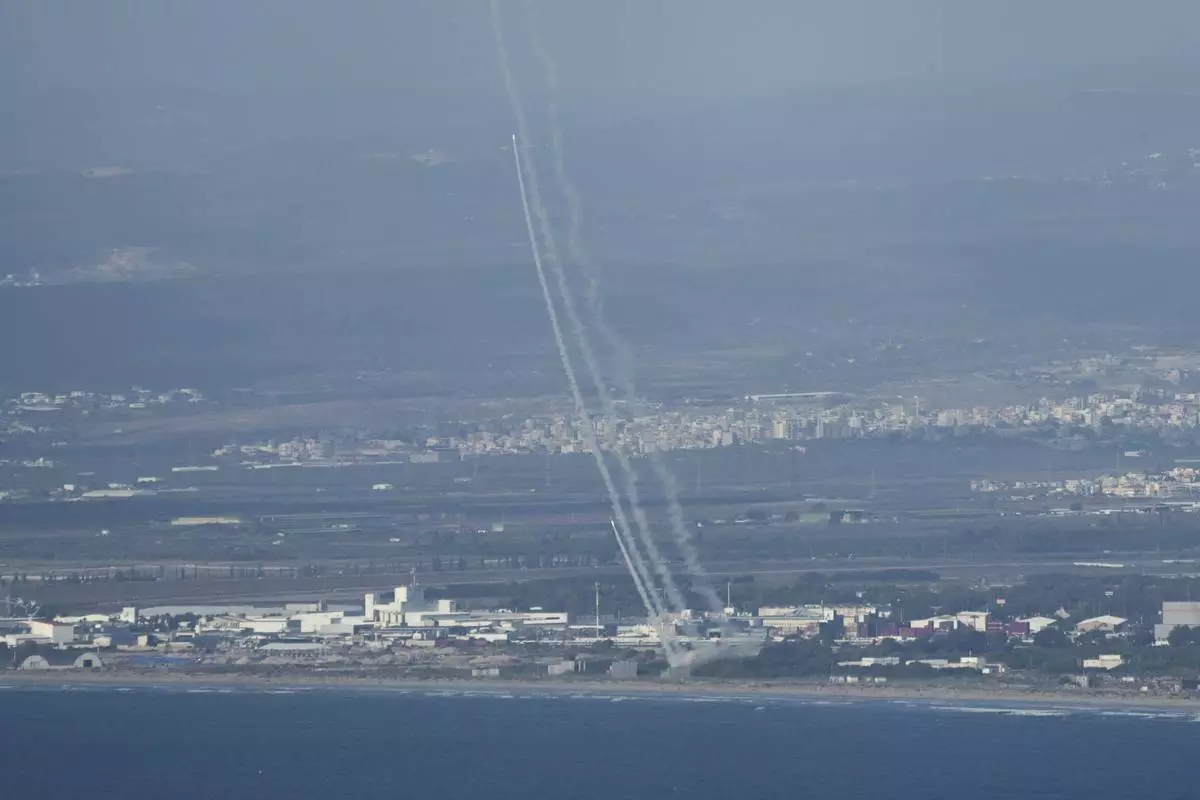
Israeli Iron Dome air defense system fires to intercept rockets that were launched from Lebanon, in northern Israel, Monday, Sept. 23, 2024. (AP Photo/Ohad Zwigenberg)
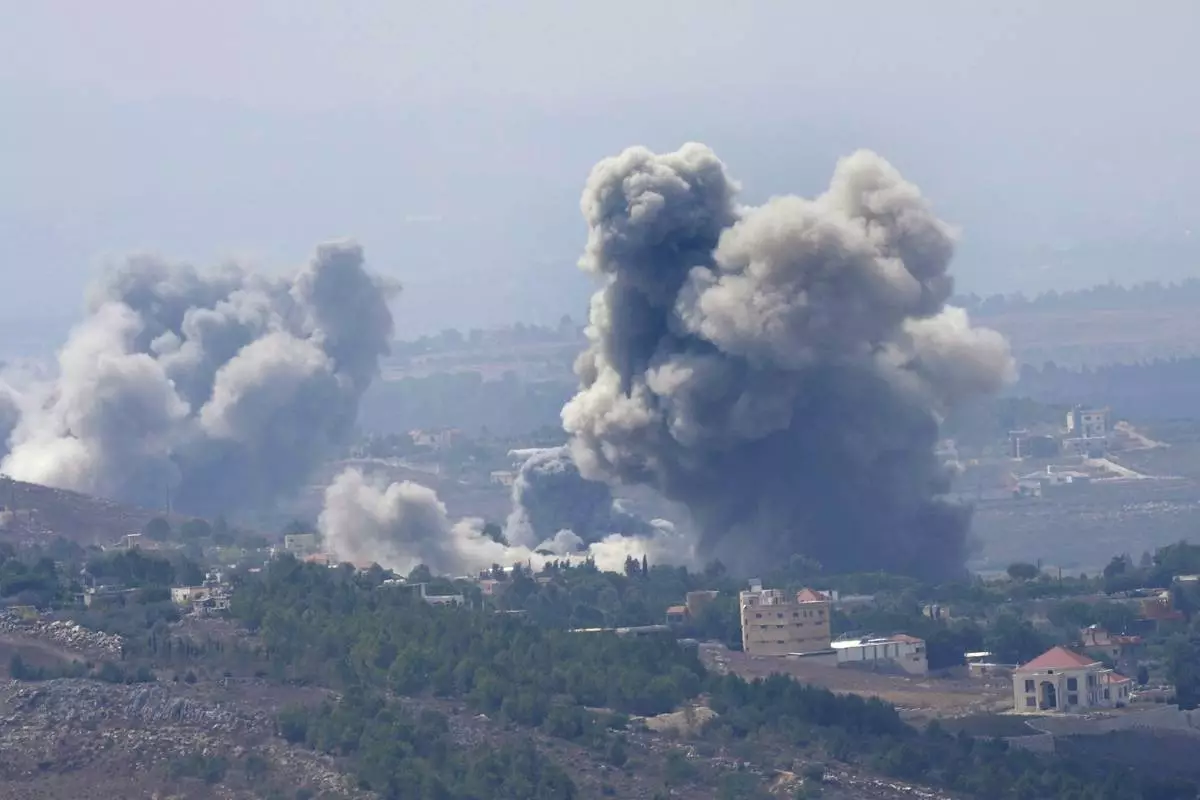
Smoke rises from Israeli airstrikes on villages in the Nabatiyeh district, seen from the southern town of Marjayoun, Lebanon, Monday, Sept. 23, 2024. (AP Photo/Hussein Malla)

Rescuers sift through the rubble as they search for people still missing at the site of Friday's Israeli strike in Beirut's southern suburbs, Monday, Sept. 23, 2024. (AP Photo/Hassan Ammar)
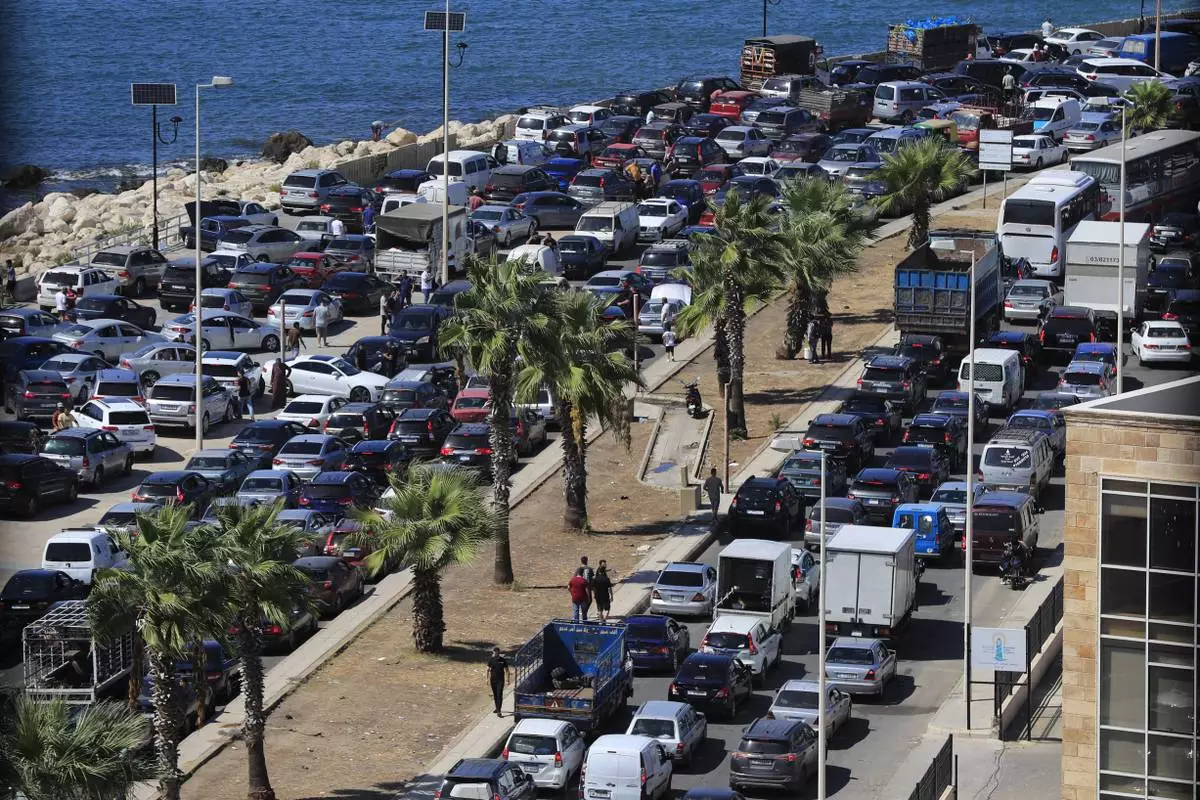
Cars sit in traffic as people flee the southern villages amid ongoing Israeli airstrikes, in Sidon, Lebanon, Monday, Sept. 23, 2024. (AP Photo/Mohammed Zaatari)
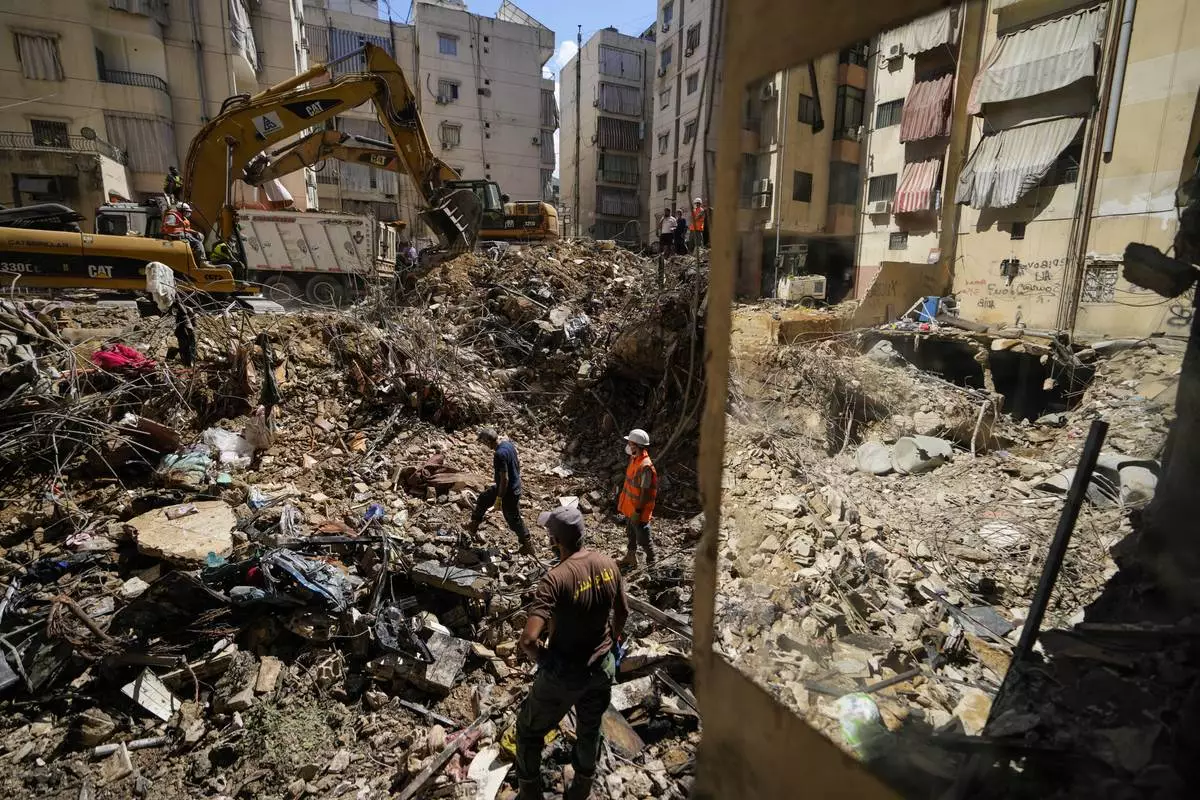
Emergency workers use excavators to clear the rubble at the site of Friday's Israeli strike in Beirut's southern suburbs, Lebanon, Monday, Sept. 23, 2024. (AP Photo/Hassan Ammar)
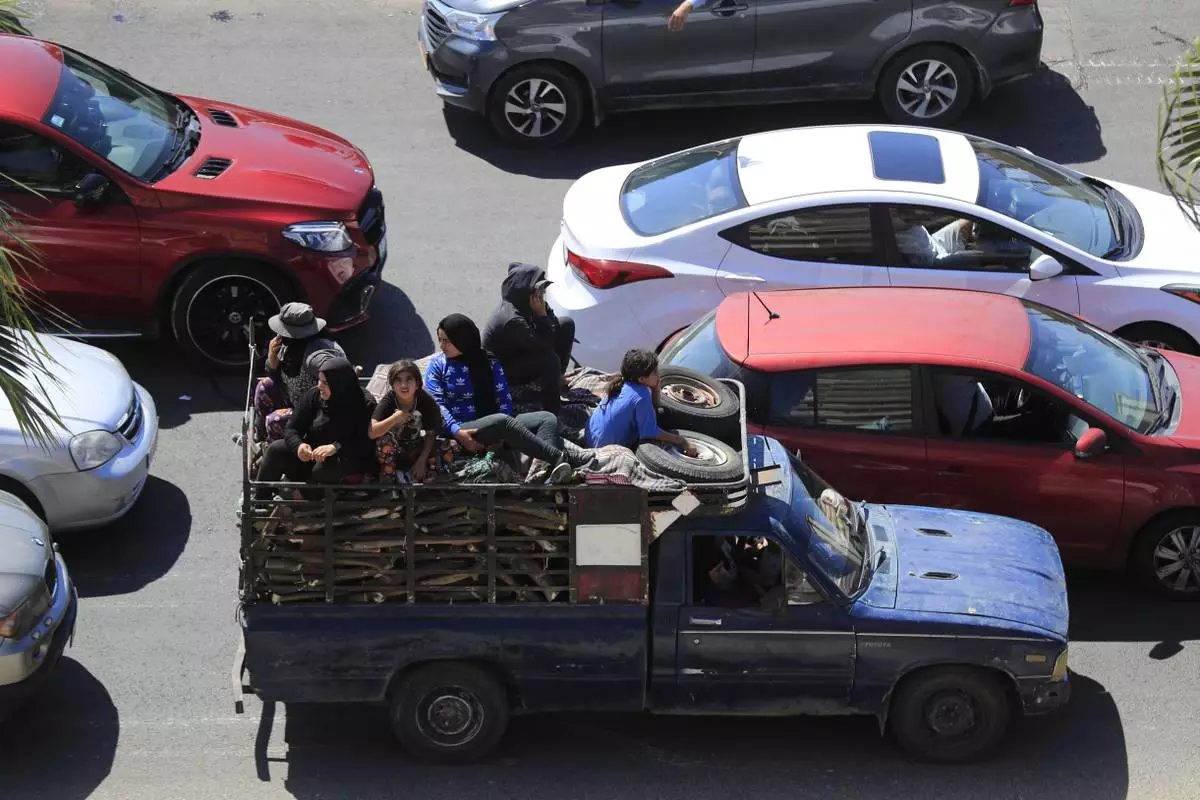
Cars sit in traffic as people flee the southern villages amid ongoing Israeli airstrikes, in Sidon, Lebanon, Monday, Sept. 23, 2024. (AP Photo/Mohammed Zaatari)

Emergency workers use excavators to clear the rubble at the site of Friday's Israeli strike in Beirut's southern suburbs, Lebanon, Monday, Sept. 23, 2024. (AP Photo/Hassan Ammar)
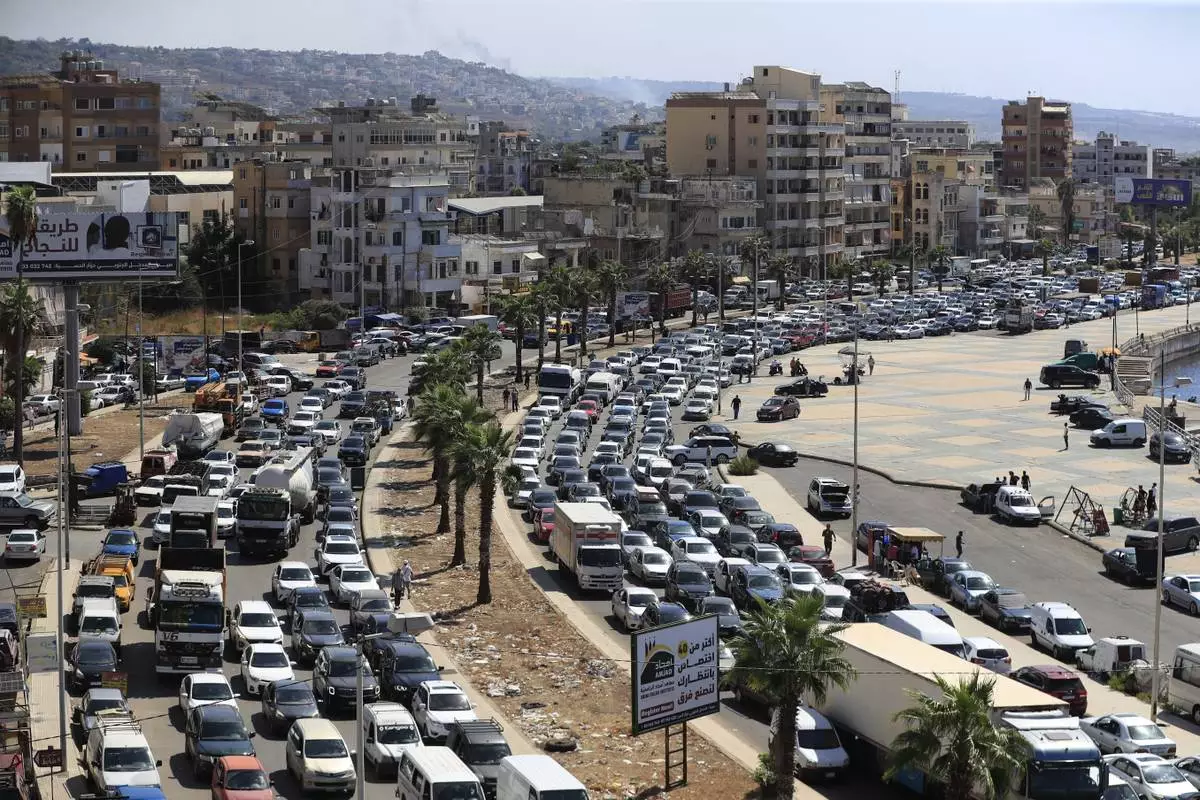
Cars sit in traffic as they flee the southern villages amid ongoing Israeli airstrikes, in Sidon, Lebanon, Monday, Sept. 23, 2024. (AP Photo/Mohammed Zaatari)
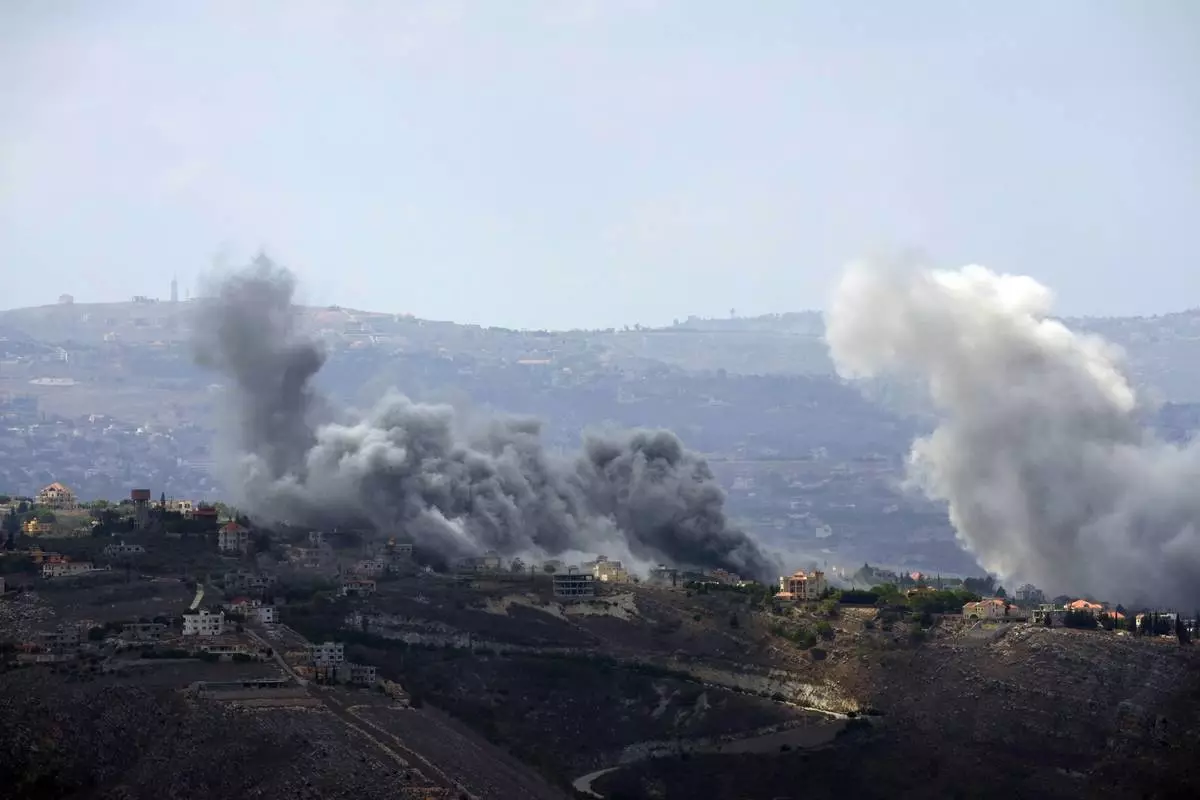
Smoke rises from Israeli airstrikes on Taybeh village, seen from the southern town of Marjayoun, Lebanon, Monday, Sept. 23, 2024. (AP Photo/Hussein Malla)
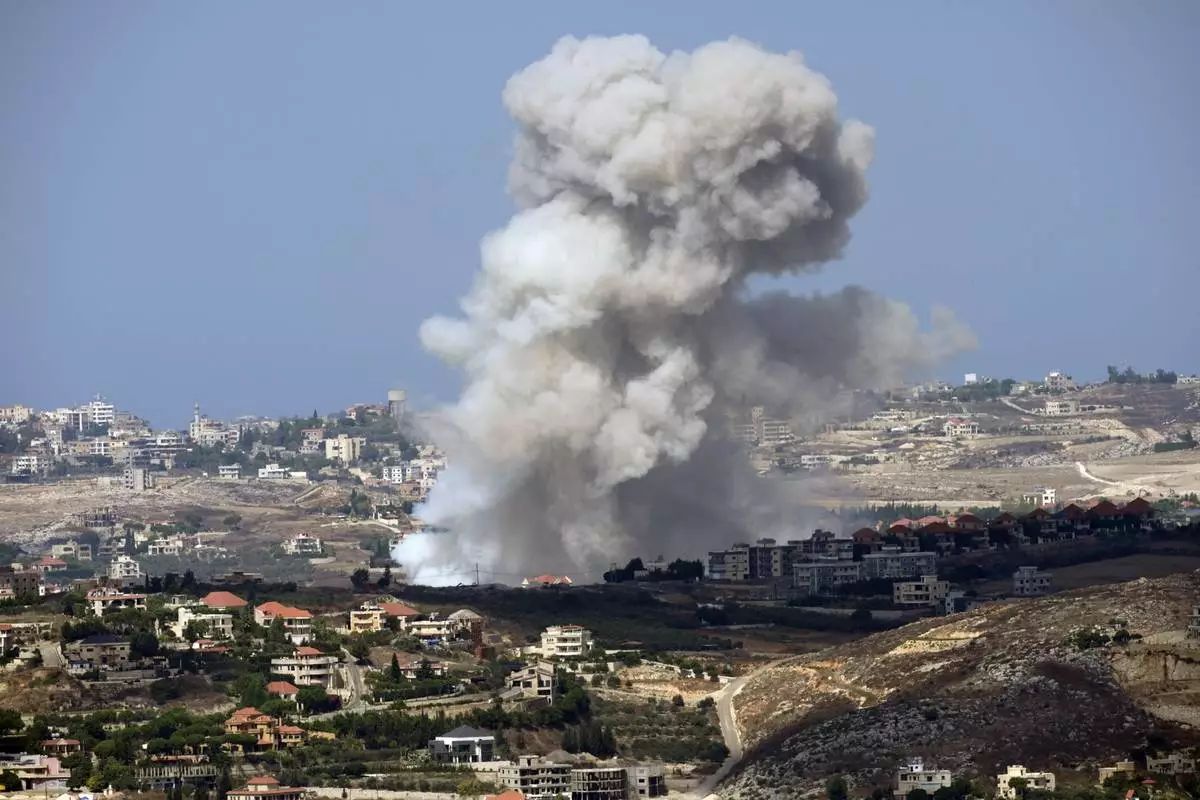
Smoke rises from Israeli shelling on villages in the Nabatiyeh district, seen from the southern town of Marjayoun, Lebanon, Monday, Sept. 23, 2024. (AP Photo/Hussein Malla)

Smoke rises from Israeli airstrikes on villages in the Nabatiyeh district, seen from the southern town of Marjayoun, Lebanon, Monday, Sept. 23, 2024.(AP Photo/Hussein Malla)

An armed Israeli fighter jet is seen from Haifa, northern Israel, on Monday, Sept. 23, 2024. (AP Photo/Baz Ratner)

Israeli Iron Dome air defense system fires to intercept rockets that were launched from Lebanon, in northern Israel, Sunday, Sept. 22, 2024. (AP Photo/Baz Ratner)
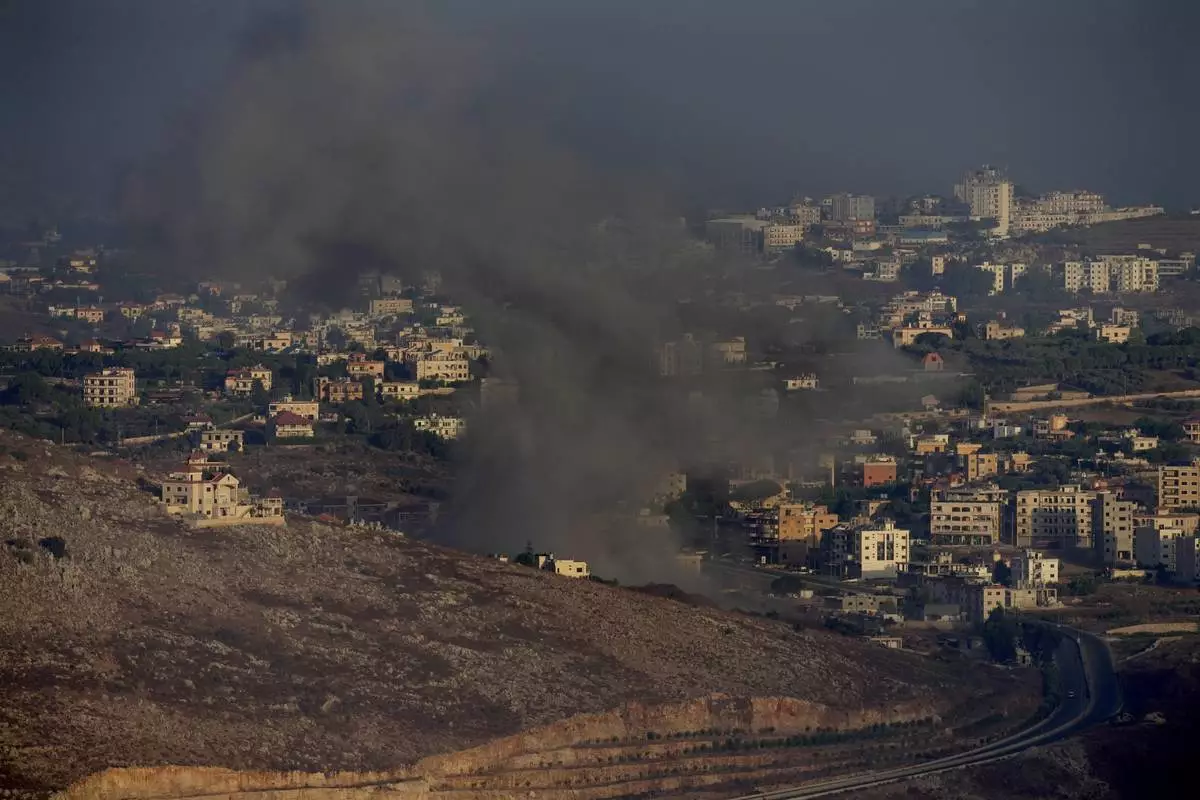
Smoke rises from an Israeli airstrike on Kfar Rouman village, as seen from Marjayoun town, south Lebanon, Monday, Sept. 23, 2024. (AP Photo/Hussein Malla)

Smoke rises from an Israeli airstrike on Khiam village, as seen from Marjayoun town, south Lebanon, Monday, Sept. 23, 2024. (AP Photo/Hussein Malla)
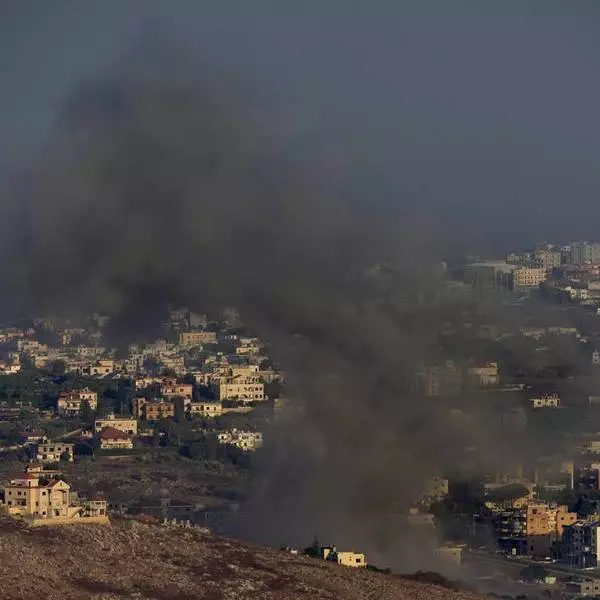
Israel calls on Lebanese to leave homes where Hezbollah stores arms as warplanes launch new strikes
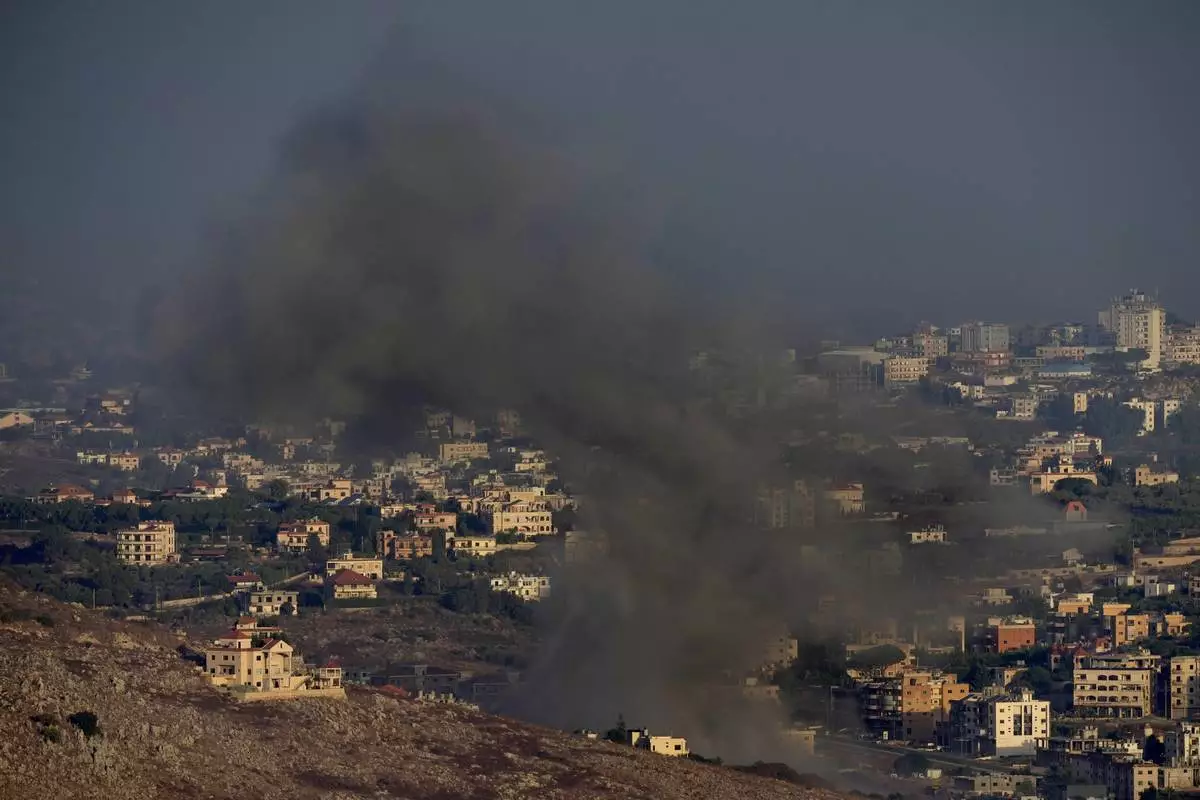
Smoke rises from an Israeli airstrike on Kfar Rouman village, as seen from Marjayoun town, south Lebanon, Monday, Sept. 23, 2024. (AP Photo/Hussein Malla)
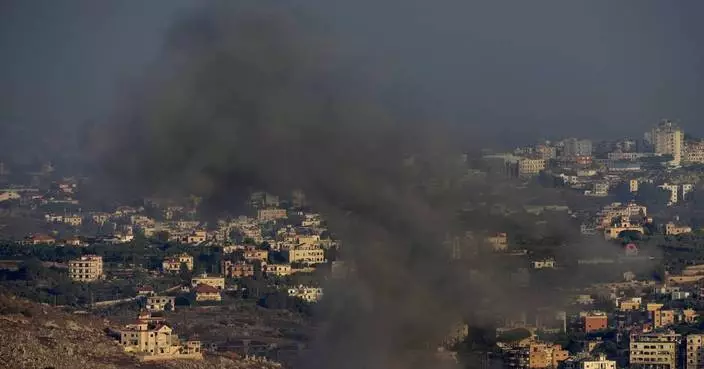
Israel calls on Lebanese to leave homes where Hezbollah stores arms as warplanes launch new strikes







